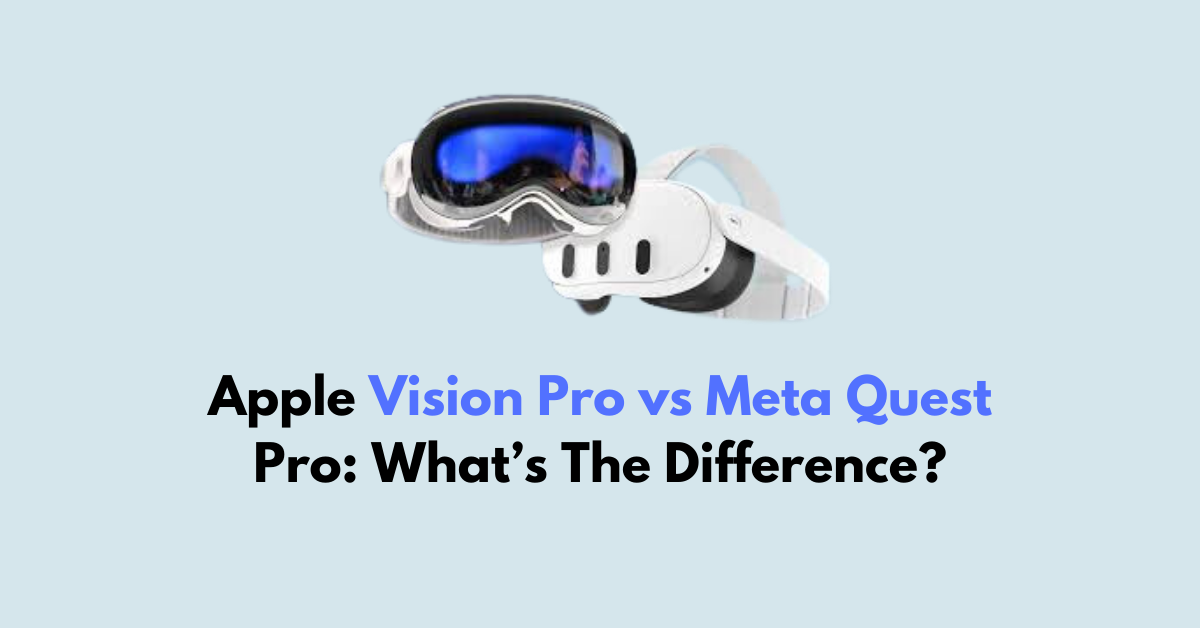When it comes to the world of virtual reality, the Apple Vision Pro and Meta Quest Pro represent two of the most advanced headsets on the market, each with its own set of features and design philosophies.
The Apple Vision Pro emphasizes a tailored user experience with eye-tracking capabilities and a design focused on custom fit and comfort, while the Meta Quest pro aims to streamline VR with a slimmer profile and standalone operation.
Understanding the differences between these two headsets is key for consumers looking to dive into VR, whether for gaming, productivity, or immersive entertainment.
Let’s explore what sets these two apart and how they’re pushing the boundaries of virtual reality technology.
Apple Vision Pro vs Meta Quest Pro: What’s the Difference?
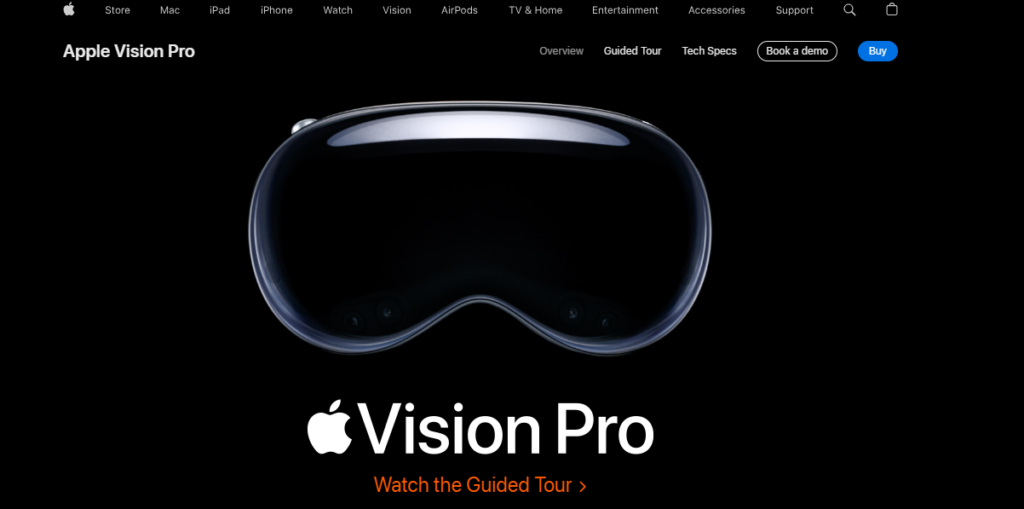
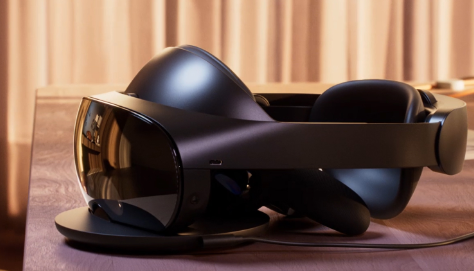
Specification Difference Of Apple Vision Pro And Meta Quest Pro
Here’s a comparison of the technical specifications for the Apple Vision Pro and Meta Quest Pro:
| Specification | Apple Vision Pro | Meta Quest Pro |
|---|---|---|
| Capacity | 256GB, 512GB, 1TB | 256 GB |
| Display | 23 million pixels | 1,920 X 1,800 pixels |
| Refresh Rates | 90Hz, 96Hz, 100Hz; | 90Hz |
| Chips | M2 and R1 | Snapdragon XR2 |
| Camera | Stereoscopic 3D main camera system, 6.5 stereo megapixels | Two 4-megapixel RGB cameras |
| Sensors | Multiple cameras, IMUs, LiDAR Scanner, Flicker sensor, Ambient light sensor | 5 infrared eye and face tracking sensors |
| Battery Life | Up to 2.5 hours general use, 2 hours video watching | 2 Hours |
| Connectivity | Wi-Fi 6 , Bluetooth | WiFi, Bluetooth |
| Operating System | vision OS | Quest system software, based on Android source code |
The Vision Pro stands out with its higher storage capacity options, superior display resolution, and a wider range of refresh rates, which are powered by Apple’s advanced M2 and R1 chips. Its comprehensive sensor suite, including LiDAR and ambient light sensors, provides an enhanced and more precise VR experience.
On the other hand, the Meta Quest Pro, with its Snapdragon XR2 chip and dedicated RGB cameras, offers a competent VR experience with a focus on eye and face tracking.
Both headsets have similar battery lives, but the Vision Pro’s additional connectivity options with Wi-Fi 6 and its proprietary vision OS could appeal to users looking for a more integrated Apple ecosystem experience.
Meanwhile, the Quest Pro’s Android-based operating system may be more familiar to users already invested in that platform.
Design Comparison Of Apple Vision Pro And Meta Quest Pro
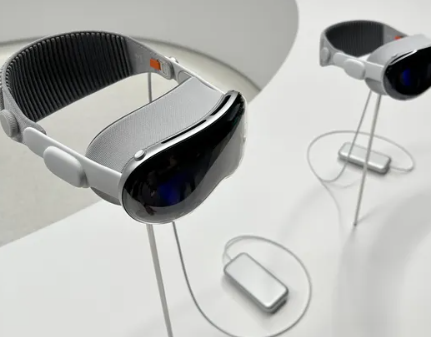
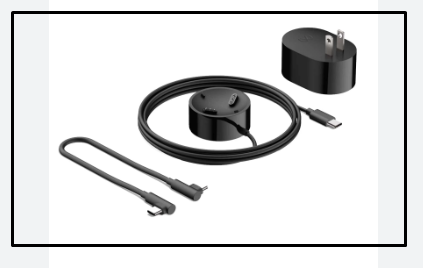
When you’re choosing between the Apple Vision Pro and the Meta Quest Pro, consider the design factors that contribute to your comfort during extended use.
The Apple Vision Pro is recognized for its sleek design, characterized by a minimalist aesthetic.
It offers a balance of functionality and style with a premium build quality. It uses high-end materials that feel robust yet lightweight, reducing the stress on your head and neck during prolonged sessions.
- Straps: Adjustable elastic straps for a customized fit
- Weight Distribution: Comparatively more weight at the front
- Cushioning: Plush cushioning around the eyes and the back of the head
On the other hand, the Meta Quest Pro provides an ergonomic design with a focus on optimal weight distribution.
It relies on a comfortable interface that adapts well to different head shapes and sizes, which is essential when immersing in virtual environments for long periods.
- Straps: Flexible straps with an easy adjustment system
- Weight: Strategically balanced to minimize front heaviness
- Materials: Breathable fabrics and soft-touch materials
| Feature | Apple Vision Pro | Meta Quest Pro |
|---|---|---|
| Head Straps | Adjustable, padded | Flexible with easy adjustment |
| Weight Distribution | Balanced to reduce pressure points | Aimed to offset front heaviness |
| Materials | Premium, with high durability | Focus on breathability and comfort |
Both headsets target premium comfort, but the Apple Vision Pro leans towards a luxurious feel, while the Meta Quest Pro emphasizes practicality and ease of use.
Controllers Difference Of Apple Vision Pro And Meta Quest Pro
The game-changing part is the Apple Vision Pro doesn’t have controllers. It works on eye movement equipped with high-end sensor tracking.
The Apple Vision Pro lets you control your VR experience without needing any physical controllers, using hand movements and voice to navigate. It even tracks your eyes so you can do things like search the web just by looking and speaking.
On the other hand, the Meta Quest Pro still uses controllers but has improved how you can use your hands in VR. The new controllers feel better to hold and might make gaming better, but it’s not clear yet how games will work on the Vision Pro.
Price Difference Of Apple Vision Pro And Meta Quest Pro
Here’s an exact price comparison in tabular form for the Apple Vision Pro and Meta Quest Pro:
| Feature | Apple Vision Pro | Meta Quest Pro |
|---|---|---|
| Starting Price | $3,499 for the base model | $999 for the 256GB model |
| Higher Storage Options | $3,700 for 512GB model, $3,900 for 1TB model | $999 for the 256GB model |
- Based on the provided table, the Apple Vision Pro is significantly more expensive than the Meta Quest Pro.
- The Vision Pro also offers higher storage options at increased prices, with the 512GB model at $3,700 and the 1TB model at $3,900.
- In contrast, the Quest Pro’s higher storage option of 256GB is priced at $649.
Unique Features and Capabilities
When you consider the Apple Vision Pro and Meta Quest Pro, it’s important to focus on what sets them apart in terms of features and capabilities.
Apple Vision Pro:
- Mixed Reality (MR): The integration of augmented reality (AR) and virtual reality (VR) offers a composite view that merges the real world with digital overlays.
- LiDAR Scanner: Enables advanced spatial awareness for more precise mixed reality experiences.
- Ecosystem Integration: Seamless connectivity with other Apple devices for a unified user experience.
Meta Quest Pro:
- Hand Tracking: Allows you to use your hands as controllers, enhancing immersion.
- Social VR Capabilities: Built for social interaction in the VR space with expressive avatars.
- Passthrough+: The high-resolution passthrough feature gives you a clear view of your surroundings without removing the headset.
| Feature | Apple Vision Pro | Meta Quest Pro |
|---|---|---|
| MR/AR Functionality | Advanced MR with LiDAR | High-quality passthrough |
| Controllers | Custom Apple controllers | Hand tracking technology |
| Device Integration | Synchronizes with Apple ecosystem | Works within the Meta platform |
| Unique Selling Proposition | High-fidelity MR experiences | Social VR and intuitive interaction |
Both devices aim to offer you unique ways to interact with digital content, and your choice may depend on whether you prefer the Apple Vision Pro’s MR prowess with robust ecosystem compatibility, or the Meta Quest Pro’s emphasis on hand tracking and social virtual experiences.
Purpose and Use Cases
When choosing between the Apple Vision Pro and the Meta Quest Pro, consider how you intend to use your VR headset, as each excels in different areas.
Gaming Experience
The Apple Vision Pro is designed with a focus on mixed reality, offering immersive gaming experiences by blending virtual and real-world elements. However, the Meta Quest Pro might be your go-to choice if you’re seeking a device that is deeply rooted in virtual reality gaming.
With the Quest Pro’s comfort and high-quality display, extended gaming sessions can become more enjoyable.
Professional and Business Applications
For professionals, the Apple Vision Pro steps into the arena with strong mixed reality features that could be advantageous for design and collaboration in workspaces.
The Meta Quest Pro, on the other hand, with its touch-plus controllers, provides precision and ease that are essential in applications like virtual training and simulations.
Your preference may depend on whether you value hands-off interaction or tactile feedback for your business needs.
If gaming is your main interest, the Meta Quest Pro might be the more suitable choice, while the Apple Vision Pro offers a broader, high-end mixed reality experience that can also cater to gaming needs.
